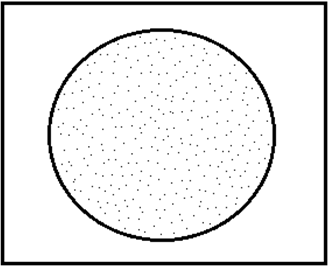This set of Iron Making Multiple Choice Questions & Answers (MCQs) focuses on “Mechanism of Reduction”.
1. The amount of Sulphur present in hot metal must lie in the range of ___________
a) 0.020-0.050(wt%)
b) 0.015-0.030(wt%)
c) 0.030-0.050(wt%)
d) 0.025-0.040(wt%)
View Answer
Explanation: The amount of Sulphur present in hot metal must lie in the range of 0.02-0.05 weight percent. Sulphur causes hot shortness or hot cracking in iron if present in excess amount.
2. Manganese is desirable in hot metal.
a) True
b) False
View Answer
Explanation: Manganese is desirable in hot metal in small amount because it enhances the workability of iron. Mn is a transition metal element and has an atomic number 25. Transition metals have properties of both metal and nonmetal.
3. The making of slag of desirable properties is very important to control the hot metal composition.
a) True
b) False
View Answer
Explanation: The formation of slag of desirable properties is very important. The composition of 3.5-4.3wt%C, 0.2-0.15wt%Si, 0.020-0.050wt%S, 0.1-2.0wt%P, 0.2-1.5wt%Mn, 0.15maxwt%Ti is necessary to be maintained in hot metal.
4. Figure below shows which type of pattern of ore reduction?

a) Uniform internal reduction
b) Topochemical reduction with a sharp interface
c) Topochemical reduction with a diffused interface
d) Topochemical reduction
View Answer
Explanation: Uniform internal reduction takes place when the particles are small, temperature is low, Reduction is slower and porosity is high. Also it takes place when diffusion through pores is faster than chemical reaction. Topochemical reduction with a diffused interface takes place when diffusion is slower than chemical reaction. Topochemical reduction with a diffused interface takes place when diffusion rate is comparable with chemical reaction.
5. Kinetics of reduction of FeO involve 5 major steps.
a) True
b) False
View Answer
Explanation: Major steps are:
i. Transfer of reactant gases to the solid interface
ii. Diffusion of gases into solid through the pores
iii. Chemical reaction
iv. Diffusion of product gases outwards
v. Transfer of product gases across the boundary to the bulk.
6. The rate of the chemical reaction depends on temperature, gas composition, size of the particles and nature of the solid particles in terms of their structure and composition.
a) True
b) False
View Answer
Explanation: All of these factors (temperature, gas composition, size of the particles and nature of the solid particles in terms of their structure and composition) influence the rate of the chemical reaction. Various laboratory tests have been carried out to establish this behavior.
Sanfoundry Global Education & Learning Series – Iron Making.
To practice all areas of Iron Making, here is complete set of 1000+ Multiple Choice Questions and Answers.
If you find a mistake in question / option / answer, kindly take a screenshot and email to [email protected]
